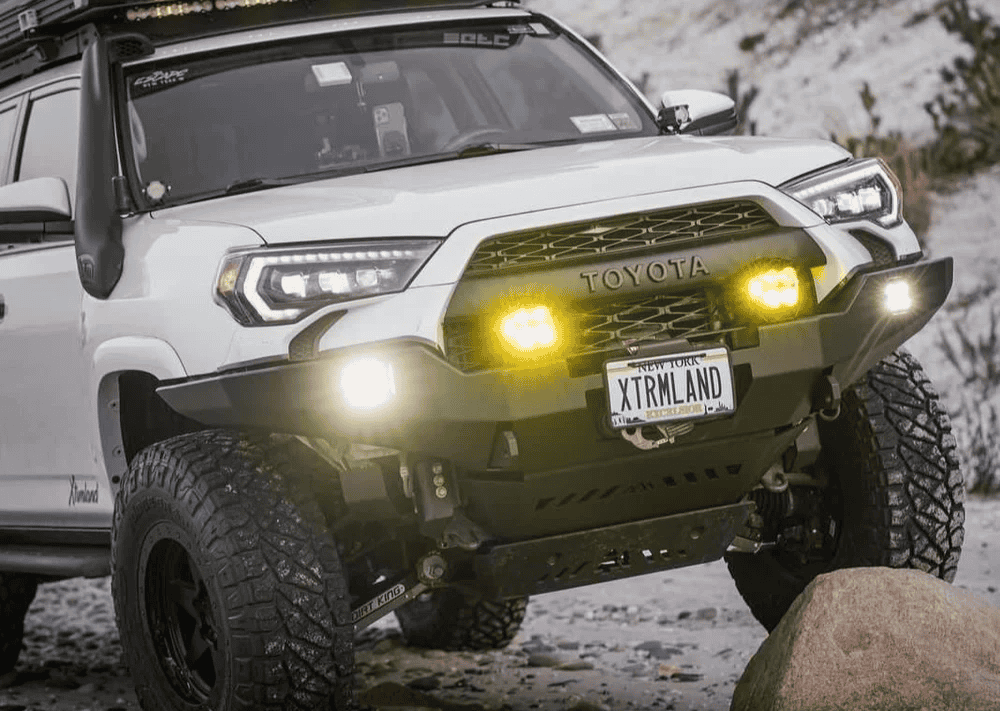Overland Vehicles

A well rounded Toyota Tacoma overland build starts with the parts that touch the ground and the pieces that carry the load. The goal is simple control on rough roads, predictable handling with added weight, and enough clearance to protect vital components without overtaxing the drivetrain.
Suspension tuned for travel weight matters more than raw lift height. Quality coilovers or struts with matched rear leaf packs keep the truck composed on washboard and ruts while maintaining alignment and braking stability. Limit total lift to what the geometry and driveshaft angles can support reliably. Skid plates for the engine, transmission, and tank add confidence without affecting ride quality.
Tire choice shapes traction and comfort. All terrain tires in the 32 to 33 inch range are common for Tacomas because they add ground clearance without a major gearing penalty. Load rating and sidewall construction should match your truck’s payload and trail risk. Aim for proper tire pressure management on dirt to improve grip and reduce impact harshness.
Tune spring rates for real world payload, not empty curb weight. Add adjustable shocks if you plan to vary load between short trips and long hauls. After any lift, set caster and toe precisely and check driveshaft phasing to avoid vibration.
Choose a strong wheel with sensible width to support your chosen tire. Avoid excessive offset that widens track and stresses bearings. Pack a full size spare and know your torque spec and jack points by heart.
Larger tires can dull throttle response and hunting for gears. If the truck feels strained, a regear can restore drivability and help keep transmission temps in check. Pair skid plates with rock sliders to protect the cab and bed mounts.
Overland travel is easier when your electrical and storage systems are simple, serviceable, and safe. Power needs rise quickly with fridges, lights, cameras, and charge devices. A dual battery or DC to DC charger with an AGM or lithium house battery keeps accessories off the starting battery. Add solar on the roof or a deployable panel to extend off grid days.
Storage organizes the load and protects the truck. A canopy shell or modular bed rack supports tents, boards, and solar while keeping weight low and centered. Drawer systems tame small items and create a flat deck for bulky gear. Keep heavy tools and water as low and forward as possible to preserve handling.
Use a fused distribution panel, quality wire, and proper crimping. Label circuits, add a battery monitor, and keep critical spares like fuses and connectors. Ground cleanly to the frame and isolate the house system from the chassis where appropriate.
Desert routes demand dust sealing. Use closed cell foam and positive pressure vents in canopies. Strap everything. A quiet, rattle free truck lowers driver fatigue and reduces wear on components.
Water management is non negotiable. A compact tank or jerry system with a simple pump and inline filter covers cooking, cleaning, and hydration. Plan for refill frequency based on route distance, temperatures, and group size.
Maps and guidance do not replace judgement, but they help you move with purpose. Pair a dedicated GPS or offline mapping app with printed maps. A reliable radio keeps your group connected beyond cell range, and a satellite messenger handles emergencies and check ins.
Recovery gear should match the truck and terrain. Use rated front and rear recovery points, a quality strap, soft shackles, and traction boards. An onboard or portable compressor manages tire pressure changes before and after dirt. Practice with your equipment in a safe setting so you know what to expect when the ground turns tricky.
Safety layers save small problems from becoming big. Pack a first aid kit you know how to use, a fire extinguisher within reach, and basic spares like belts, coolant, and tire repair supplies. Track payload on a scale so you stay within axle and gross ratings. Weight discipline preserves braking, cooling, and suspension life over long miles.
A balanced Toyota Tacoma overland build is more than a parts list. It is a system that respects payload, protects vital components, and supports the way you travel. When every piece works together, the truck fades into the background and the landscape takes center stage.
If you want expert design and install support for the full system, the team at OZK builds complete rigs and targeted packages. Explore our approach to adventure platforms on Overland Rigs and see how a purpose built setup improves handling, power management, and storage. For suspension, electrical, and interior layouts tailored to your routes, check our Custom Overland Upfit options and get a plan that fits your Tacoma’s payload and trip style. Curious about process and support from start to handoff Read more at Why Choose OZK Customs.
Ready to turn your Tacoma into an overland rig that just works on every mile Turn your list into a plan with OZK Customs. Our team designs and installs suspension, power systems, racks, water, lighting, and interiors that fit your payload and route. Tell us where you want to go and we will build the Tacoma that gets you there. Share a few trip details and we will send a clear quote and timeline.
ADDRESS:
6159 E Huntsville Rd, Fayetteville, AR 72701
PHONE:
(479) 326-9200
EMAIL:
info@ozkvans.com